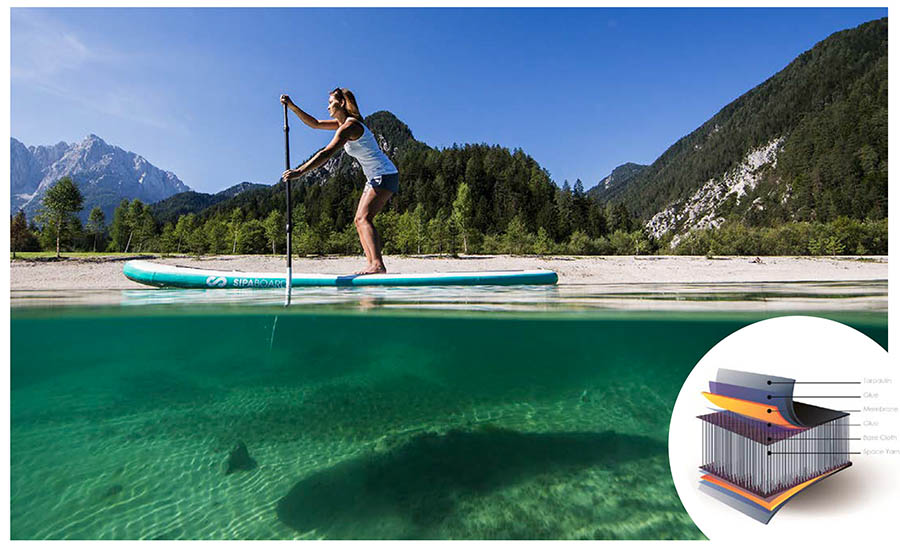The inflatable boat has always had the advantages of easy transport and storability over their molded counterparts. Touted as capable of fitting under your bed or in the trunk of your car, they diminish the need for roof racks, reducing your risk of injury loading and unloading, improving gas mileage, and facilitating getting on the water. The one zone inflatables have long been considered inferior is their rigidity and performance. However, this is swiftly changing, thanks largely to the rise of drop stitch technology.
With more companies unveiling updated inflatable technology and carbon/inflatable hybrids for 2017s inflatable market, the 2017 Paddle Expo proved inflatables are on the rise, showcasing products that are bridging the performance gap.
Developments in dropstitch technology and the use of PVC stringers have revolutionized inflatable performance. In the SUP market, this is evident as manufacturers expand inflatable options from primarily “all around” and “cruiser” style entry-level models to inflatables of every genre, even high performance surf and race boards. “Unlike traditional fabrics used for inflatable products, Drop stitch, once inflated, can produce incredibly strong flat surfaces, due to the important pressure made possible by the technology” clarifies Aquadesign’s Terry Barbier. Aquadesign’s 2017 product lineup includes a 12’6 SUP featuring “Bi-drop”, with two different thicknesses of Drop stitch (15cm and 7 cm) and two different inflatable compartments improving safety and allowing a lower position of the rider for better balance.
Drop stitch is in no way exclusive to the SUP market. Companies like Gumotex, Bic, Aquadesign and Woosung are using it to revolutionize Inflatable Kayak and Canoe hulls for a stiffer bottomed boat that comes closer to imitating the edges on a hard boat. Woosung has long promoted the drop stitch advantages of lightness and rigidity, and was one of the first to adopt the material into inflatable canoe and kayak models. “Drop Stitch Hulls capable of inflating to higher PSI also help reduce drag and friction as the kayak moves through the water, minimizing wake and the energy required while enhancing tracking and glidabilty,” asserts Woosung.
Brands like Hala Gear Sup and NoveNove unveiled fiberglass and carbon-inflatable blends for products that are more rigid and responsive than dropstitch alone, a trend likely to be adopted by the rest of the inflatable market. In Hala’s Nass-T touring and race board, carbon fiber composite material runs the length of the entire top and bottom for glide, speed, and performance in a board you can store and transport easily. NoveNove’s new DUO SUP and Windsurf boards feature glass tails and inflatable noses that allow the board to plane faster and engage the rails during speed jibes and turns.
Low-maintenance, you are unlikely to damage inflatables, especially those made from rugged dropstitch. This makes learning less intimidating and means you can share without stress,. They are also versatile and beginner friendly, usable for floating, fishing, or running rapids. The increase in the lighter weight, more durable Dropstitch inflatables may also lead to a surge in whitewater exploration and new product lines.
The downside comes in terms of price, with the average inflatable craft still an investment for the casual recreational user. For those truly seeking performance, while dropstitch technologies improve rigidity and performance, in high performance activities requiring fine edge control, such as surfing, there remains a marked difference.
Even so, as Drop Stitch becomes more prevalent, inflatables become appealing to a broader market. There is no doubt they are the way forward for the recreational paddler who wants get out and enjoy the water at the entry or performance level.
By: Anna Bruno, Kayak Session, Paddle World and Sup World Mag editor.


